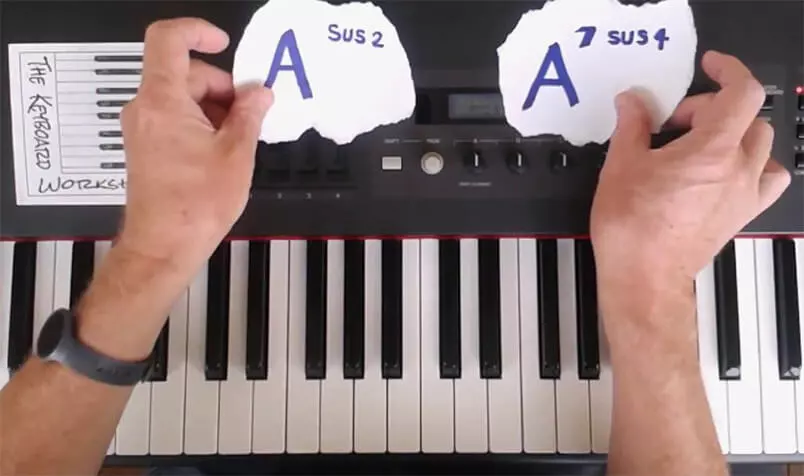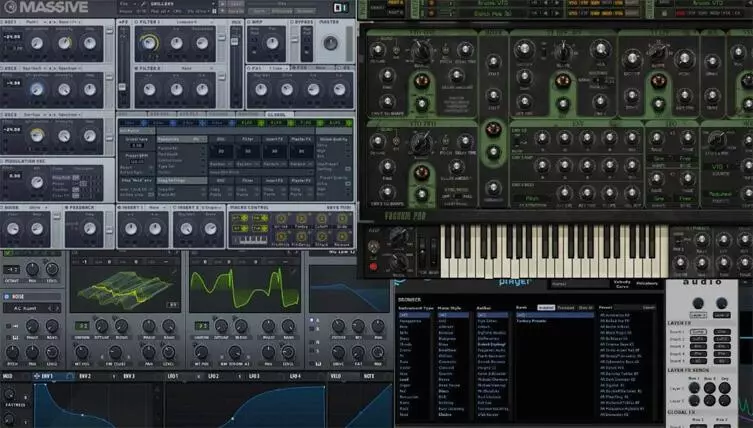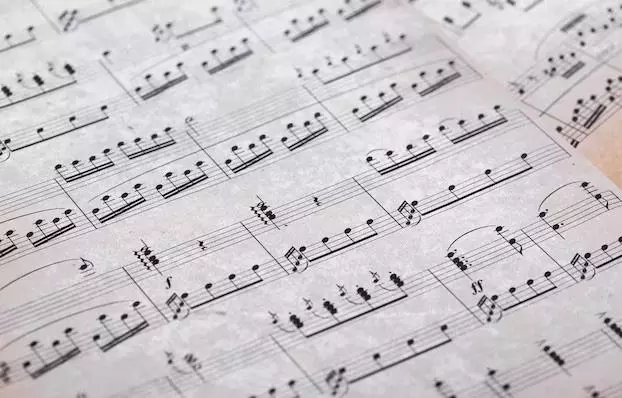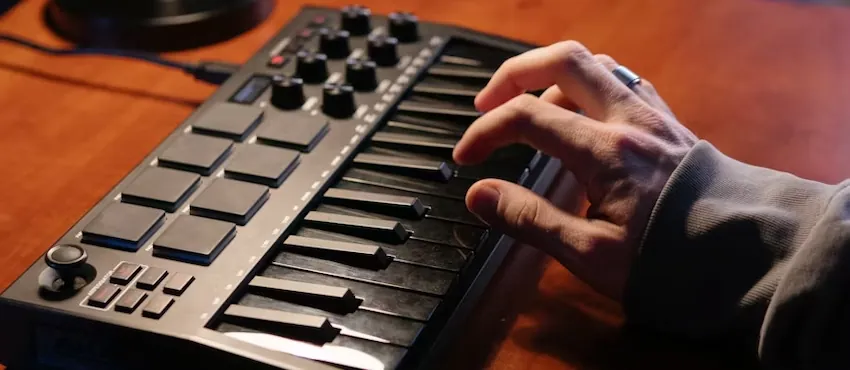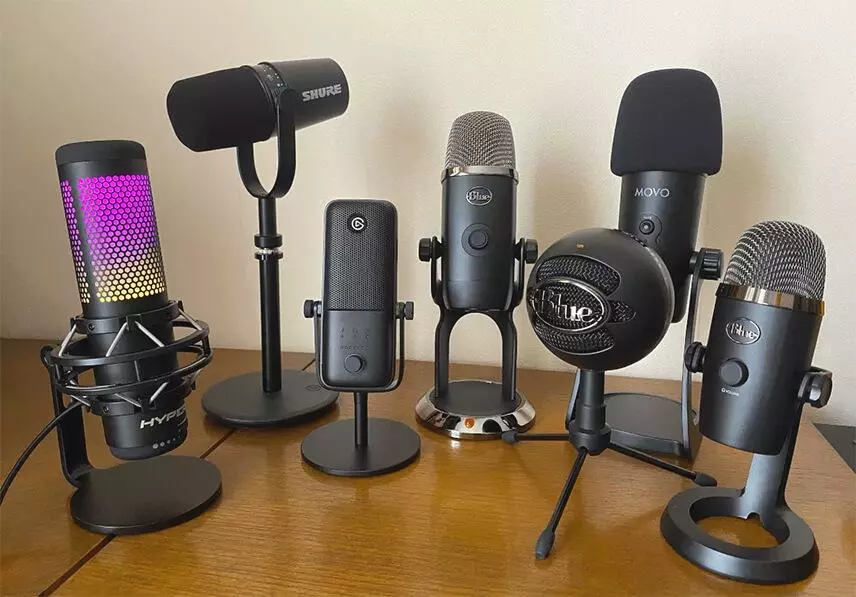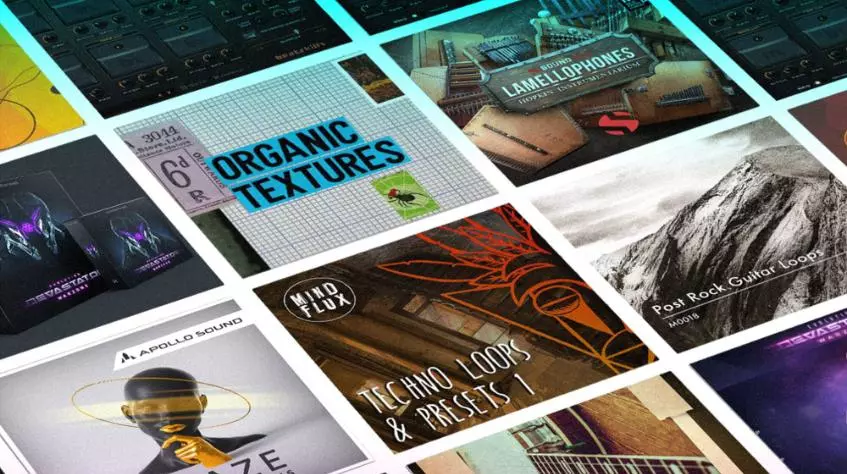How to make music
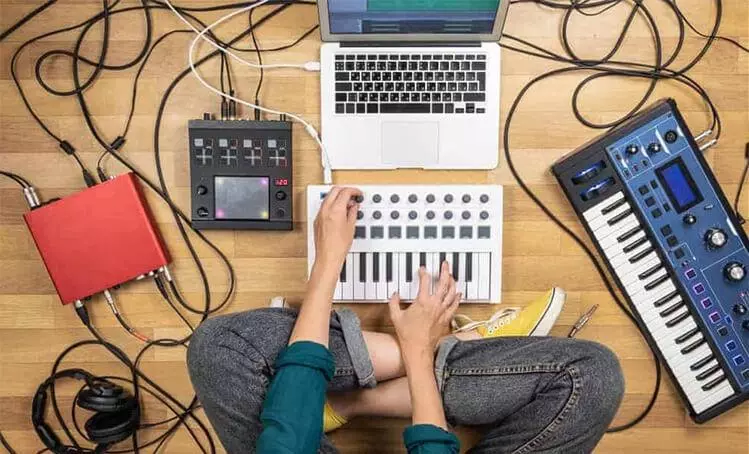
Until recently, everyone who was interested in the question of how to make music had to understand that the process itself requires careful preparation and practice. The absence of plug-ins and multitrack sequencers made it necessary to rehearse the material repeatedly until it was almost automatic. In the studio, everything had to be played flawlessly, in sync, and with no mistakes.
However, with the advent of computer programs, musicians gained the ability to record multiple takes and edit tracks effortlessly with just a few clicks of a mouse. Nowadays, one can easily produce a hit song from the comfort of their home, as many contemporary singers have proven through their experiences.
What are the requirements to create music?
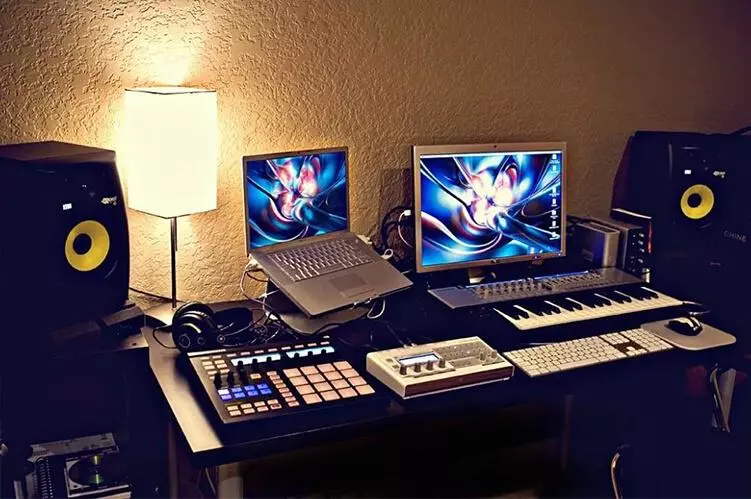
Without a doubt, a high-end professional studio boasts significant advantages when it comes to equipment. These studios typically provide you with spacious soundproof rooms that have outstanding acoustics, as well as high-quality compressors and equalizers, a wide selection of microphones, an analog console, a well-equipped control room with multiple monitor lines, and much more.
However, a home studio has its own benefits in terms of budget and efficiency. If you’re creating electronic music using a computer and plug-ins, you won’t need soundproof rooms or a multitude of microphones. You’re not going to record a full orchestra, drums, or a grand piano, after all. All you need to do is focus on the essentials and get started. So, what equipment do you need to set up a complete home production studio?
- Computer;
- Sequencer with plugins;
- Audio interface;
- Monitors;
- Headphones;
- Microphone;
- Midi keyboard;
- Guitar, bass guitar (if you play);
- Subdued room;
- Racks and wires.
In the present day, you no longer need to install gigabytes of software on your computer to compose your own music. With a sequencer such as Amped Studio, you can produce music directly in your web browser, as all the essential features, tools, and plug-ins are already included. You can find an audio editor, a MIDI editor, synthesizers, samplers, and processing effects in this online sequencer. Therefore, in reality, an online sequencer allows you to work without any additional software.
What other equipment is not necessary for making music? Monitors can be substituted with high-quality headphones, eliminating the need for acoustic room treatment. If you don’t have a MIDI keyboard, you can simply draw notes with a pencil in the MIDI editor. In Amped Studio, you can even draw entire chords with just one click. While a microphone is useful for recording vocals, it isn’t required.
As a result, all you need to make music is a computer, headphones, an audio interface, and an Internet connection. However, if you don’t have monitors or a microphone, you can forgo the audio interface as well. Is it possible to create music without a computer entirely? Nowadays, this is achievable with mobile music production on a smartphone or tablet.
What are the ways to create music without using a computer?
An online sequencer operates within a web browser on a computer, laptop, tablet, or smartphone, enabling you to use any mobile device connected to the internet to compose music. These programs do not have any special system requirements and do not require the download of software, sampler libraries, or virtual instruments and effect plug-ins.
The online format streamlines the music composition process, allowing you to quickly capture musical ideas, even when you’re away from your computer with a sequencer. Simply open the website on your smartphone or tablet and jot down a melody, beat, or hook. Later on, when you’re back at your computer, you can easily finalize your project.
Amped Studio, an online sequencer, is incredibly user-friendly and offers a wide range of music composition features. It operates in a multitrack format, records audio and MIDI from external sources, and edits audio and MIDI clips. Additionally, it provides a variety of loops, samplers, and MIDI patterns and includes built-in virtual instruments and plug-ins. With these features, it is already possible to create music solely with their aid. Here is a basic equipment list:
- Synthesizer;
- Sampler;
- Drum machine;
- Compressor;
- Equalizer;
- Delay;
- Reverb;
- Horus;
- Distortion.
In addition, Amped Studio allows for VSTs from a computer to be connected, which is not typically a feature of online sequencers. Furthermore, it offers a unique feature that converts a sung melody into a sequence of MIDI notes. Additionally, Amped Studio enables multiple users to collaborate on the same project from different computers, which is a feature not commonly found in stationary programs.
This software is particularly beneficial for beatmakers, composers, and songwriters who are looking to create music quickly and efficiently. It is also excellent for arranging music, and vocalists, guitarists, and keyboardists will find the sound recording function particularly useful. Even mix engineers can take advantage of Amped Studio’s capabilities to balance tracks and apply effects to them.
Do you need to have knowledge of music theory to create music?
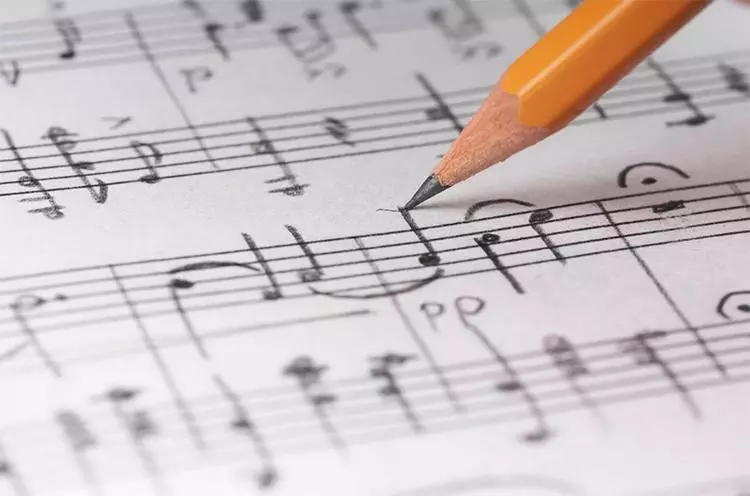
It may disappoint you, but having some knowledge of music theory is essential for a musician. However, the good news is that it is not necessary to memorize it all. As you immerse yourself in the musical world, you will become familiar with its concepts and laws naturally. Even if you are not familiar with the terminology, it doesn’t prevent you from creating a melody. Some musicians have mastered techniques and can quickly come up with interesting ideas without knowing their technical names.
When you make music, you need to distinguish between major and minor scales (and other modes), intervals, time signatures, chords, and so on. You may be able to differentiate the moods that a fourth or sixth evoke, even if you don’t know their names. There’s no need to know any terms at all. If you can indicate the tempo with a number, such as 120 bpm, why do you need to remember what “adagio,” “moderato,” “allegro,” etc., mean?
Many people wonder if it’s possible to make music without knowing musical notation. In reality, it’s difficult to find a music producer who uses musical notation in their work and places dots with flags on the staff. Speedy sight-reading is useful only for orchestra musicians but not for composers and arrangers. Although knowledge can make your work easier, faster, and more interesting.
Some people make music randomly, choosing notes by ear. This is also a method, but those who are familiar with the circle of fourths and fifths, intervals, frets, the arrangement of sharps and flats in different keys, can easily imagine all the notes in their head and quickly find them on the keyboard or fretboard. When a musician lacks inspiration, they can rely on logic and knowledge, but it should never slow them down. Practice should always come first.
What are the components of a song?
Most contemporary songs designed for a broad audience are constructed using repetitive structures. You don’t have to devise complicated arrangements and convoluted storylines as in detective novels to create music for songs, except in cases of opera or classical works. The following are the primary components of a typical song:
- Introduction (Intro);
- Couplet (Verse);
- Entering the chorus (Pre-chorus);
- Chorus;
- Playback (Bridge);
- Culmination (Middle, Build-up);
- Interchange (Drop, Solo);
- Conclusion (Outro, Coda).
Writing music does not always follow a strict code or formula. Not all pieces have to include a climax or follow a certain structure. Some songs may end with a solo or chorus, while others only repeat a verse and chorus with a continuous looping arpeggio as accompaniment. Even the entry of the chorus is not always required. Despite this, it is important to give careful attention to all elements of the composition.
Introduction. To make music, there is no strict rule to follow. Some popular songs begin with a verse, while others start with a chorus. The standard song structure usually includes an intro, a bridge, and a coda. The intro may repeat the melody of the chorus, a specific tune, or one of the hooks, but it can also be entirely unique.
Main part. The conventional approach to composing music is to simply alternate between verses and choruses, usually repeating each section two or three times. However, it is important to still incorporate dynamics and drama. The verses should be more subdued, narrative, and straightforward, often sung in a lower range to set the stage for the main event. The main event is the chorus, which should be more dynamic, vibrant, strong, melodic, and richly arranged with higher notes. Essentially, the entire song leads up to the chorus.
Pre-chorus. The pre-chorus is a component that is often overlooked when creating music. However, incorporating a pre-chorus can enhance the drama and make the music more intriguing. The pre-chorus alters the mood of the verse and creates a more intense atmosphere. It serves as a bridge between the peaceful part and the explosive part of the song, preparing the listener for the change. It’s similar to a yellow traffic light, indicating that something exciting is about to happen.
Build-up. This method can enhance the dramatic development of a piece of music. It creates a moment of calm, a slowdown, and a shift in mood. In some cases, the drum part may be omitted, while the vocal melody typically undergoes a change. There are various possibilities for this section, including shifting from minor to major, altering the rhythm, creating a breakdown, or transitioning to a different key. However, it is also possible to forego this part entirely.
Solo or drop. When writing music with a guitar, it’s important to avoid endless solos. Keep in mind that there’s a designated spot where the lead guitar will shine. Electronic styles don’t typically have solos, but they have drops where the music transitions from a calm or slow section to a powerful dance rhythm with heavy synthesizers. At this point, there may be a rap or just a run-through of the verse.
Coda. Typically, the final part of composing music is often overlooked. At this point, you may either reintroduce the bridge, bring the solo to a climax, or repeat the chorus to create a conclusion for the song. The choice is yours. You have the opportunity to create a memorable ending by crafting a unique and creative final section.
Bridges and cutouts. Crafting music that seamlessly transitions from one part to another can be challenging, and not all listeners may appreciate it. It can be effective to include a brief pause or interlude following a powerful chorus, such as a chord progression or a solo in the bridge. Drum fills, hooks, or small harmonic shifts are often added within each section to add interest and keep the song engaging.
Development is one of the basic principles of making music. It’s true that many songs consist of repetitive parts, but that doesn’t mean they have to be monotonous. Each part, including the second verse and chorus, should still have some evolution or variation from the previous one to keep things interesting. This can be achieved by adding new elements or changing things up. In fact, it’s ideal to introduce something new every beat to maintain the listener’s engagement.
How can you create variety in your music when it comes to verses? You can add a melodic instrument with counterpoint to the second verse, include percussion, backing vocals, or a second guitar, thicken the bass, adjust the hi-hat slightly, change the guitar arpeggio, insert a fill pad, or make the bass play extra fills. These techniques can also be applied to the chorus.
You don’t need to use all these tricks at once. There are endless possibilities for creating interesting music, and inventing something new is the essence of creativity. The more original and innovative your ideas, the better. However, repetition is also essential to make your song stick in the listener’s mind.
The process of making music requires a balance between using proven techniques and experimenting with new ones. It involves creating expectations and then subverting them to keep the listener engaged. Repetition creates a hypnotic effect that draws the listener in, but breaking from that pattern can surprise and excite them. Ultimately, it’s all about controlling the listener’s experience through the careful use of repetition and variation.
Instrumentation and arrangement. From a dynamic perspective, we explored how to make music by considering the instruments and instrumental groups in a synchronous aspect. Every song has a unique set of instruments that play throughout the composition, and the core of the song should not be altered, or it will sound disjointed. So, what does this core consist of?
The instrumentation of a song can be broken down into several key components, including:
- Main instrument, which can be either vocals or a lead synth, and serves as the focal point of the song;
- Rhythm section, consisting of drums and bass, which provide the foundational groove and pulse of the music.;
- Supporting instruments, which may include rhythm guitar, piano, organ, or other instruments that provide harmonic and rhythmic support;
- Second solo instrument, which can be a lead guitar, a synth lead that interacts with the main instrument, or another melodic instrument used for the drop or other sections;
- Fillers, which include pads, effects, percussion, and other elements that add texture and atmosphere to the music.
To write pleasant and cohesive music, all the parts must be constructed in the same key and dissonance should be avoided. If two instruments play dissonant intervals such as tritones or sevenths simultaneously, it can be unpleasant to the ear. However, if played by a single instrument in a specific style and context, these intervals can sound great. Additionally, rhythmic confusion should be avoided.
Making music involves weaving instrumental lines together, limited only by the composer’s imagination. Dialogue and common melody between instruments, as well as unison playing, are common techniques, especially between guitar and bass. To create a clear beat, all elements should be adjusted to match the rhythm, with the bass guitar often partially repeating the vocal melody and the drums driving the rhythm.
Sticking to style norms when writing music is important, but there is always room for experimentation. For instance, funk bass is known for using syncopation, and in metal, a repeating riff forms the song’s pattern instead of chords.
Understanding music theory is essential for effective composition, but it’s important to learn it in the context of practical use. Technical terms like “syncope,” “weak beat,” “septima,” and “counterpoint” may need clarification, but mastering them through deliberate practice is the key to retaining the knowledge.
How is the song created?
Even today, writing music remains a challenging task. To the average person, the most magical, complex, and crucial aspect of the process is the composition itself. This might be true for authors who are not producing their music independently. However, in reality, before a song is released to a wide audience, it undergoes several stages of refinement. There are several steps involved in refining a rough idea:
- Songwriting;
- Arrangement;
- Sound recording;
- Editing;
- Mixing;
- Mastering.
In an ideal scenario, different roles are involved in the process of creating music: the author writes the music, the arranger does the arrangement, the recording engineer handles recording, the assistant sound engineer does the editing, the mix engineer takes care of the mixing, and finally, the mastering engineer does the final touches. However, in reality, the author often arranges their own songs and only one sound engineer may be responsible for recording, editing, and mixing.
Songwriting. The person who creates the musical composition is known as the author. The author is responsible for crafting the vocal melody and creating a basic accompaniment on either the piano or guitar. At this stage, another person may take charge of writing the lyrics. Once the song’s foundation is established, the author typically sends the rough draft to an experienced arranger for further refinement.
Arrangement. In reality, the most magical part of creating music occurs during the arranging stage. The arranger is responsible for selecting the instruments, finalizing the harmonies, developing musical ideas, creating transitions and hooks. It is only after the arrangement is completed that the music truly comes to life in all its glory.
Sound recording. At a minimum, once the arrangement is finished, clean vocals need to be recorded. If you have written music with live instruments, then you also need to record drums, guitars, violins, trumpets, grand piano and any other instruments that the arranger included in the song. This requires both musicians and a recording studio.
Editing. Quantizing MIDI parts is a straightforward process, but dealing with mic tracks can be challenging. Even if you are only working with vocal recordings, you need to carefully select takes, adjust their timing and volume, correct any pitch issues, and remove unwanted noise such as clicks, pops, and background sounds.
Mixing. Once all the tracks have been polished to perfection, the sound engineer begins to work with them. They adjust the volume levels, utilize equalizers, compressors, saturators, and reverbs to process the tracks. This is also a time-consuming process, and sometimes, mixing can be just as challenging as composing the music.
Mastering. When the sound engineer has finished working with multiple tracks, the mastering engineer receives a single file – the completed mix. Their task is to perfect the sound with the help of top-of-the-line monitors, high-quality equipment, and an ideally acoustically treated room.
Promotion. Although this stage does not involve the process of writing music itself, it is equally crucial. It is essential to allocate a certain budget for advertising, promotional campaigns, and releasing the song on streaming platforms. Without proper promotion, even a potential super hit may go unnoticed. Therefore, it is essential to keep this in mind while working on music.
Some tips to remember
- Don’t let theory hold you back. Starting to write music is simple if you don’t let yourself get stuck thinking that you don’t know enough or don’t have the necessary skills. Only use theory as necessary and refer to it when you feel like you need more knowledge;
- Analyze your favorite songs. A great way to improve your music writing skills is by analyzing hits. By understanding the logic behind successful songs, you can learn to write like a pro. Break down popular tracks and try to replicate them, taking note of interesting solutions. Referencing successful songs can also be helpful when working on your own material;
- Strive for originality. Many people believe that successful music creators follow some universal rules. However, if you examine a few timeless hits, you will discover that each of them has its own unique flavor. Therefore, don’t be afraid to experiment and try to come up with something that will captivate the audience with its originality;
- Watch for trends. Consider exploring the preferences of today’s audience to create music that will be popular. While it’s important to stay true to your own musical style, you may find inspiration in discovering what resonates with listeners in today’s market;
- Write music easily. Don’t get bogged down in arranging music for too long. Try to complete it quickly and avoid getting stuck in the process. Many musicians struggle with unfinished demos because they get caught up in trying to make it perfect. It’s important to know when to prioritize completion over perfectionism.
The most important piece of advice is to take action. Don’t wait to have a perfect understanding of music theory, acquire expensive equipment or plugins. Practice and experience will teach you more than any theoretical knowledge or tools.
If you don’t have studio monitors, use headphones. If you can’t afford software, use the free sequencer. Today, you can start making music online just by turning on your computer. You will eventually acquire the equipment you desire, but in the meantime, focus on using what you have to develop your skills. Who knows, you might already be a great producer by the time you get your dream gear. It’s all up to you.




